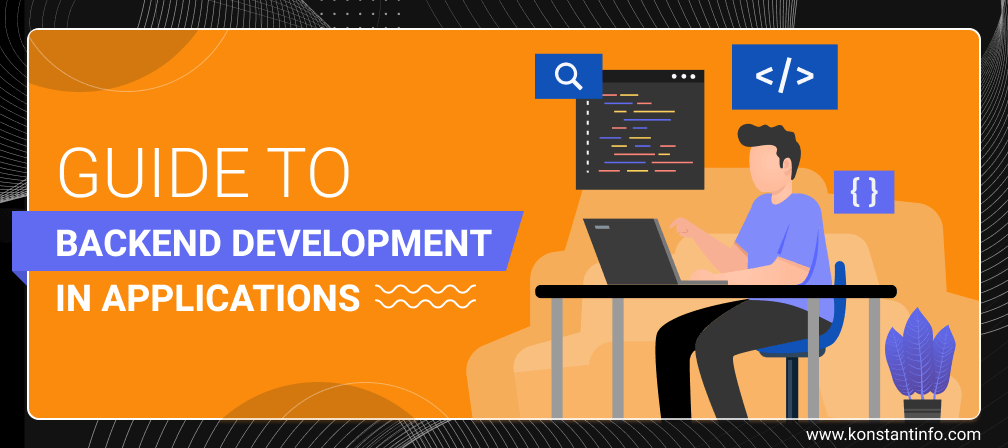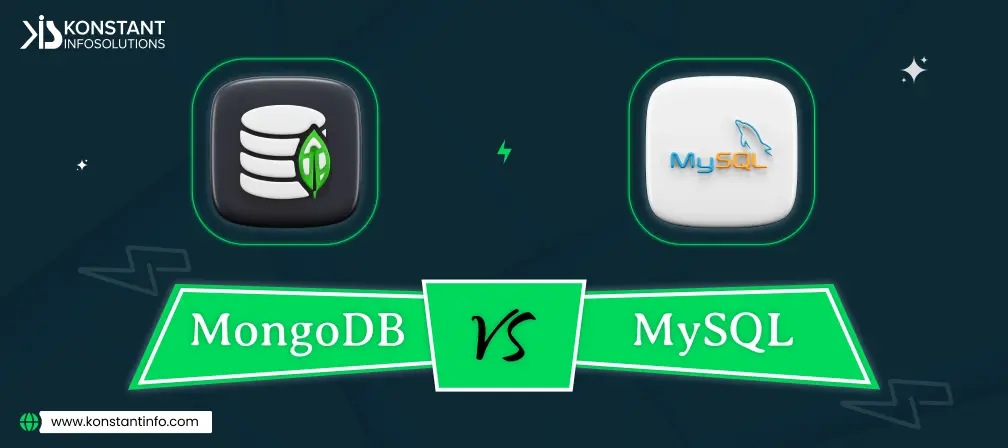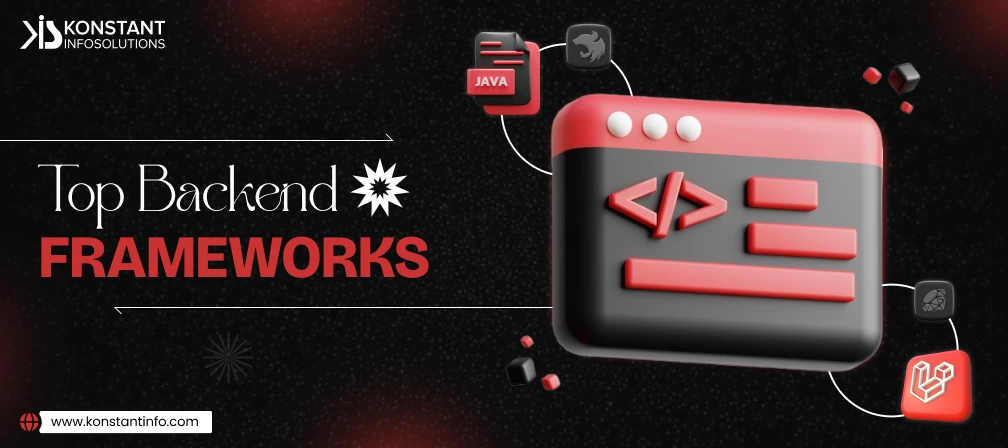Backend empowers the functionality of an entire application. It pulls together the frontend and the database to portray a presentable application before users. Traditional backend architecture consists of an application server, a web server and a database at its core. If the architecture is growth-oriented, it might include a load balancer, a host of service integrations such as email notifications, push notifications and queuing services. A backend is structured to imbibe the type of functionality that you want from the app and your business niche.
Frontend vs. Backend
These are the layers that make up hardware, a computer program, which is delineated based on how accessible they are to a user. The backend is a computer app or a program’s code that allows it to operate but is inaccessible to the user. Backend is the data access layer of the OSI model and TCP/IP stack. The layer above the backend is the frontend. The backend includes any functionality that requires to be accessed and navigated by digital means. The frontend layer includes all software or hardware that is part of the user interface. These layers interact with various aspects of the frontend of the program – user-entered data, buttons, programs, websites, and other features. Such features should be friendly and easy to use.
Also read:
What Exactly Is Backend Technology?
Backend technology involves synchronizing a dynamic app across platforms, as well as data storage capabilities, the ability to send notification messages and the capacity to support different HTTP methods. The backend of an application determines what it is capable of doing and what do you require to maintain it.
The Importance of the Backend in Website Designing
- User-Friendly Content Management System: An app’s basic content management system allows users to copy images, create new pages, change navigation, store and index data, search and retrieve information, access control, publish and report.
- Popular web CMS features include: Integrating audit logs, integrating file managers, installing and upgrading wizards, customizing templates to manage content presentation, permission-based access control, user and group functionality, content organization structures, content visualization, collaboration platform, delegation between user groups, language or user groups, versioning and workflow management, compliance with website and accessibility standards.
- Easy Navigation: A subtle backend can ease or complicate app/website navigation. Its careful development and design can save time, and map a positive user experience.
- Flexible Calls to Action: A significant and efficient message on call-to-action buttons and links can differentiate a website/app from its competitors. A call to action is stiff enough to perform functions like rotating homepage images to news tickers to newsletter signups. But in some cases, a company might want to change the subscription settings from weekly to monthly. Your backend must be flexible enough to accommodate such changes.
- Smooth Style Sheet Implementation: Write code in a way such that it automatically updates the header, paragraph text, navigation fonts, background colours to match the company style sheet and that the branding is uniform after each time the content is changed.
- Auto-Adjusted Images: Images, animations, frames, borders, themes are accountable for an eye-catching interface. Also, image size, justification, text-wrap, quality, organization, regularity, professional images all add up to the breathing backend.
Role of the Backend in Mobile Application Development
The backend of an application takes care of all the calculations, interactions, core application logic, data and application integration, databases, API, technical needs, and all the functionalities of the application. How does a backend handle and weave various parts of the application together?
- A sound strategy involves interweaving raw ideas into reality and evolving amongst the competition, identifying the target audience, establishing the app’s objectives, goals and selecting the appropriate platform for your app.
- Proper planning and analysis help identify use cases and address them with benign thought. It helps in achieving progress, prioritizes app requirements and defines the minimum viable product (MVP).
- A solemn user interface and user experience design process ensures that the app is functional, easy to use, aesthetically pleasing and features architecture-workflows-wireframes-style guides-mock ups-prototypes in the SDLC process.
- Apposite app development involves back-end, server technology, API, front-end, followed by testing (user testing, functionality testing, integration testing, system testing, performance testing, smoke testing, security testing, device testing, and platform testing).
- Sublime submission of your mobile app to the app store is pertinent for it to be discovered in search results and find a host of followers.
Use Cases of Frontend and Backend
Components that focus on the frontend of a system include:
- HTML, CSS and JavaScript scripting languages for design and mark-up
- Search engine optimization (SEO)
- Accessibility and Usability testing
- Image editing tools and graphic design
- Web performance and browser compatibility
Components that focus on the backend of a system include:
- Scripting and Programming languages like PHP, Python and C#
- Automated testing frameworks
- Network availability and scalability
- Data transformation and database management
- Data backup practices and cyber-security
What Are Popular Backend Technology Stacks?
Backend technologies typically follow the MVC pattern for web architecture stacks if they are open-source. It also offers core libraries to access databases, security and session management. Most of the open-source options follow the MVC pattern for web architecture stacks and provide core libraries to access database, security and session management. A few popular options to help you with your backend are:
- APIs: Google Firebase, Backendless API, Wix API, Elebase API, Google Compute Engine API, Parse API, StackAPI REST API, Corona Cloud API – Backend as a Service, Vuforia Web Services API, Tradematic Cloud API, Backendless, Appcelerator, Kinvey, Kumulos, Sencha/Sencha Space, Amazon AWS, Kii, Appery.io, AnyPresence
- PHP MVC Frameworks: Express/Koa/Sails (Node.js), Django
- Programming Skills: PHP, Python, Ruby
- Databases: SQL, MySQL, MongoDB, and Postgres
- Web Services: REST (Representational State Transfer) and SOAP (Simple Object Access Protocol)
- Web Server Tools – Nginx, Apache
- GIT Clients – SourceTree, GitHub client
- Microservice Platform Tools – Kubernetes, Docker
- Local Development Environment – WAMP Server, XAMPP
- Collaboration Service Tools – Slack, JIRA
- App Performance Test Tool – Apache JMeter, App loader
Responsibilities of Backend Tech Developers
It is pertinent to hire API developers with the following responsibilities:
- API integration
- Creating a backup
- Knowledge of various operating systems, web technologies
- Cloud computing integration
- Creation of database, integration as well as management
- Backend frameworks for building server-side
- Server-side programming languages
- Security setting and prevention of hackers
- Content management system (CMS) development and maintenance
- Reporting with the help of analytics and statistics
Why do Developers Need To Pay More Attention to Backend Web Development?
- Information Exchange: Users require login credentials to access an application. Once they enter the login id and password, it has to be approved by the backend. Any information that is submitted by the user has to be authenticated first, to navigate ahead in the application. Thus, the backend of a website acts as a structure to facilitate information exchange.
- Various Environments: Businesses can run their websites both on web servers and in the cloud. They may combine both hosting options for enhanced performance and scalability. Developers need to customize their backend to enable it.
- The Application Logic: To simplify the development and maintenance, the programmers keep the user interface and the application logic separate. The application logic also performs the routine data exchange required by each business. This makes multiple user interfaces access the same application logic.
- Adding Utility to Each Frontend Functionality: Every time a user enters his credentials, the backend will collect the values, pass them to the database from where it is verified, the results of the comparison are reflected on the frontend. Backend code also adds functionality to various forms, profiles, accounts. Therefore, the backend is pertinent to the proper functionality of the application.
- Impacts the Website’s User Experience: Backend monitors all functions of the application. It also impacts the quality of the application user interface. Issues in the backend can result in frequent website crashes, making the website run slow, and other such performance issues. Even minor defects can result in vulnerabilities in the application. Developers much pick the right programming languages and development framework suited to the specific server-side programming language.
Why Don’t You Need a Backend?
While we have discussed the importance of having a backend, there are reasons that we don’t always need them. Some tools and games work without an internet connection in offline mode. The features that need a backend are only additions, but not central to their core purpose. And if you are building software to be used free of charge, you might not want to pay for a backend, so you can build that app so that it just needs one-time installation and no interaction with the internet later. An app that does not need the internet doesn’t need extra mechanisms to protect its users.
Is it a Good Idea to Deploy a Backend Stack in the Cloud?
Cloud computing offers a distributed architecture that helps applications scale up and add users.
How Do You Handle Security For The Backend Of APIs?
A strong secure sockets layer (SSL), integrating and authenticating API token are the basis for backend security.
Conclusive
To ensure that your website offers a rich user experience, free from interruptions, the developers need to create a high-quality backend code and a regular check-up. Backend Tech Development also offers a Cloud server, a Custom server, MBaaS (Mobile Backend as a service). Connect with our backend technology experts!
About Author
Manish Jain is the co-founder and Managing Director at Konstant Infosolutions. He is responsible for the overall operations of the company and has played a major role in bringing Konstant up from its humble beginnings and, with his immense energy and drive, transforming it into a globally trusted name in IT solutions.



